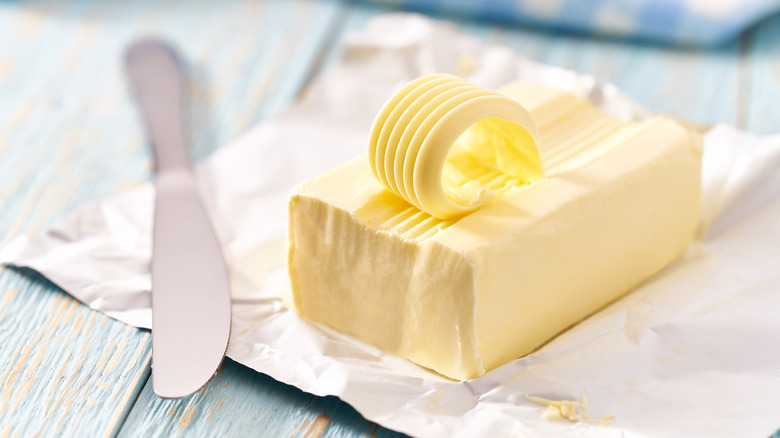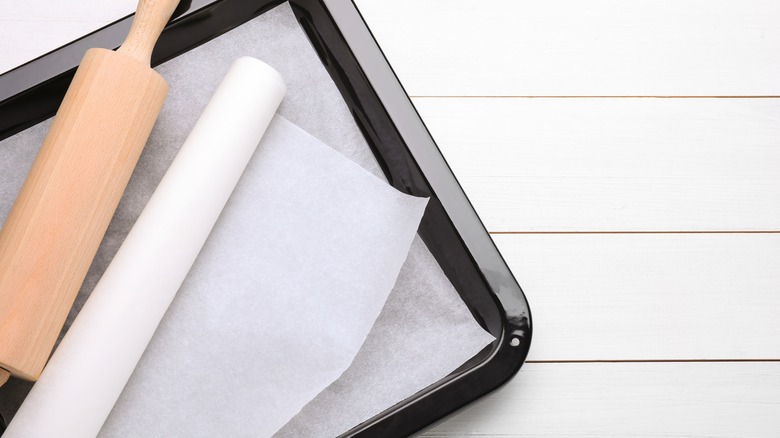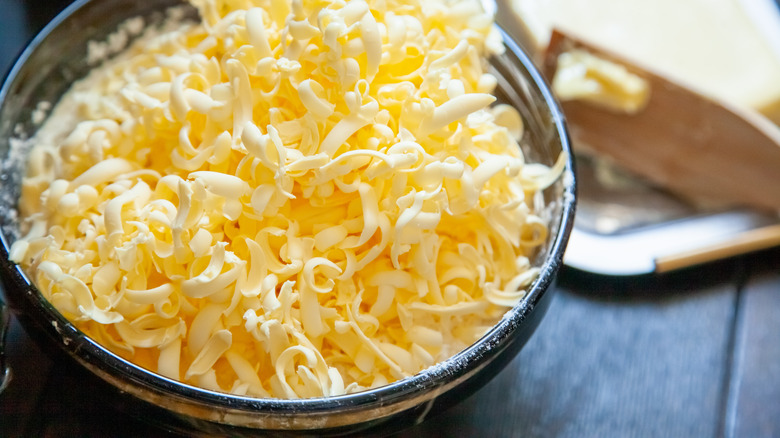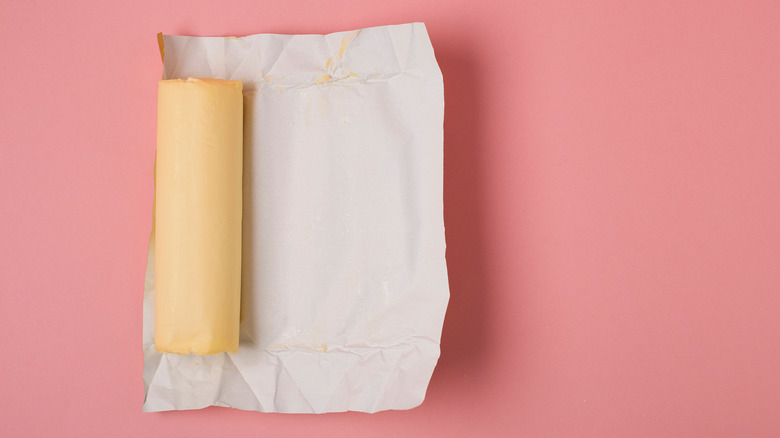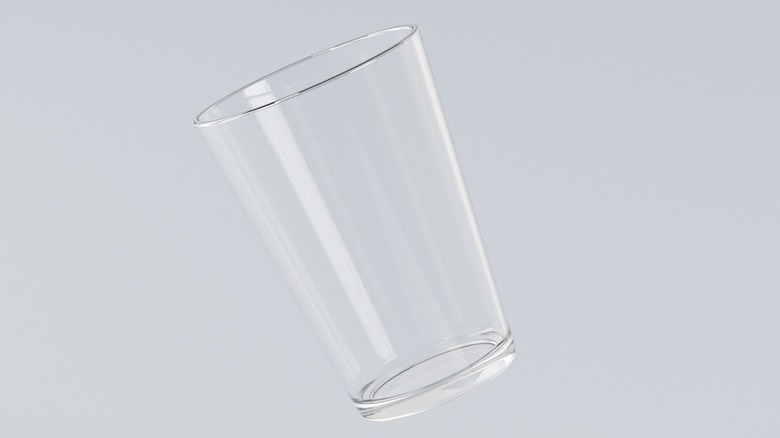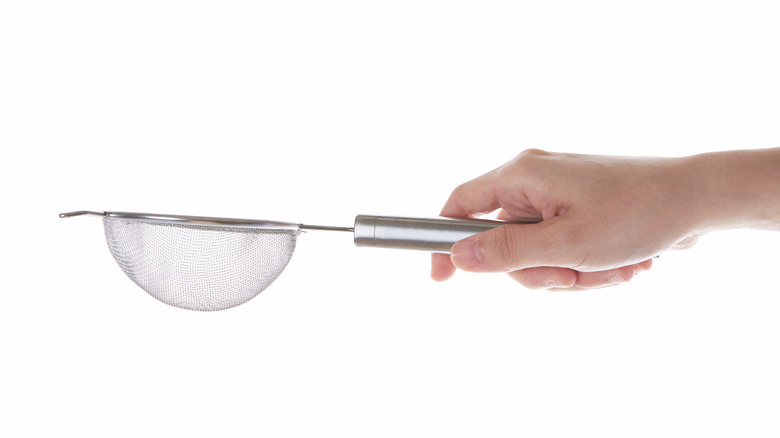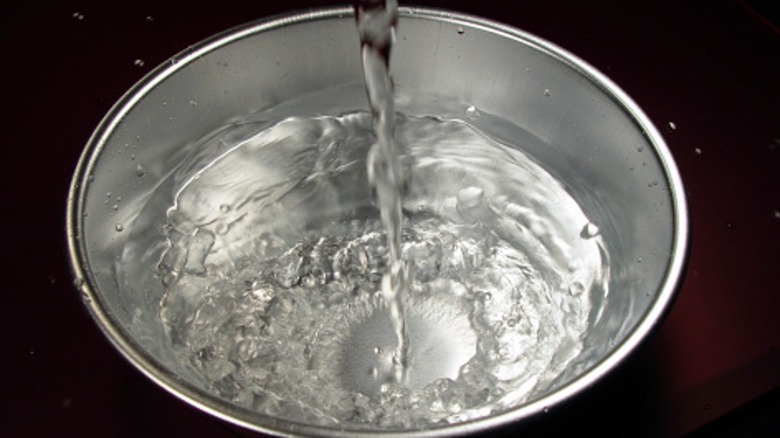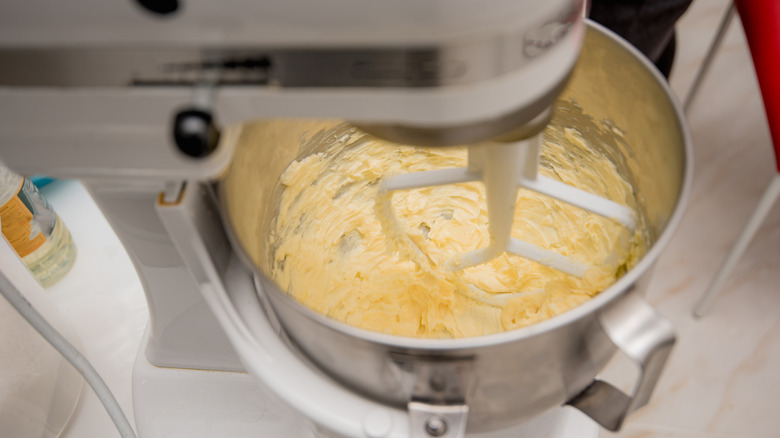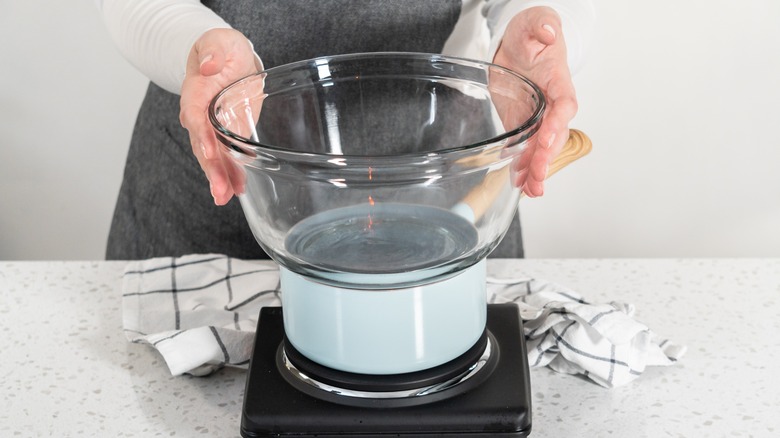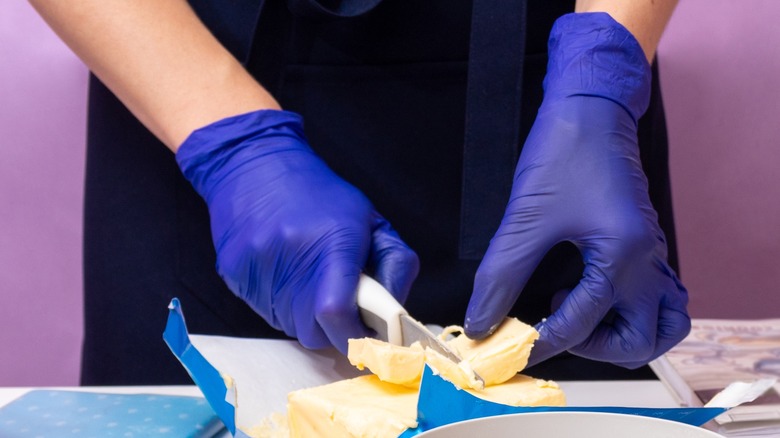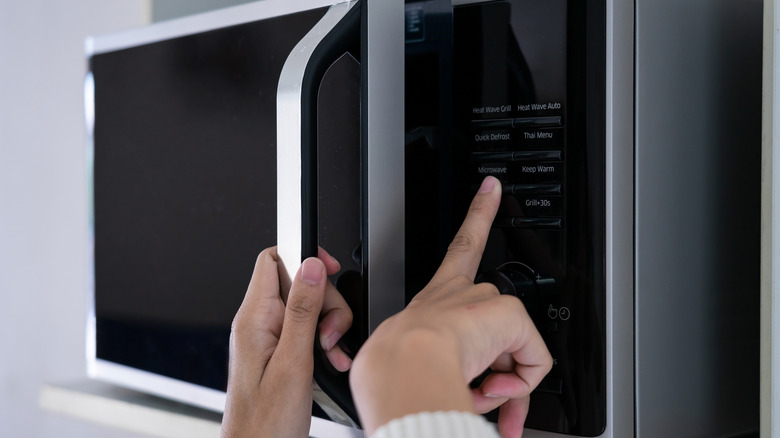12 Hacks For Softening Butter You'll Wish You Knew Sooner
We've all been there — you begin making a recipe, only to realize that you forgot to soften the butter ahead of time. Or maybe you just stumbled upon a new recipe online and want to try it out, but you're too impatient to wait for the butter's temperature to naturally rise. It can feel like the end of the world when you're short on time. Don't fret; there are plenty of tricks you might not know about that can turn your butter block into a smooth, spreadable consistency in no time. After learning these incredible kitchen hacks, you'll never catch yourself in this situation again.
In fact, you might even skip removing your butter from the fridge ahead of time because some of these techniques are more appealing. The best part is that they don't require any special equipment, but rather, you can use standard kitchen tools that you already own, such as a cheese grater, rolling pin, or sieve. And yes, there are ways to soften your butter in the microwave without instantly turning it into a golden pool of liquid. Before you know it, you'll be telling your friends and family about these absolutely genius hacks. Because once you start doing them, you'll wonder how you ever survived without them.
1. Pound it with a rolling pin
Although it can take some elbow grease depending on how hard the butter is, using a rolling pin to smash it creates impressive results. You can use this practice in a couple of ways — either with wax paper or a resealable freezer bag. This is handy because you likely have one of those items at your disposal.
If you want to try it with a Ziploc bag, you can simply unwrap the butter sticks and place them inside. Unlike when you use a rolling pin to crush crackers into breadcrumbs, you don't necessarily need to close the bag. In fact, it works out better if you leave it open just a bit. Make some effort to smash the butter and roll it to about the thickness that you would roll out cookie or pie dough. Doing this creates more surface area on the butter, exposing more of it to the room temperature air, meaning that you don't have to wait nearly as long for it to be ready.
The wax paper hack to quickly soften butter is the same concept. Take two layers of wax paper, place the butter in between, and use the same trick. The wax paper does an excellent job of preventing the butter from sticking.
2. Grate it or chop it into cubes
Similar to the rolling pin hack, this approach increases the surface area of the butter and is an excellent way to soften butter sticks in a fraction of the time. First, you can manually chop the butter into tiny cubes. To make it easier on yourself, use a sharp chef's knife so it easily glides through it. Using a dull knife can be dangerous since there's a higher chance of it slipping. Nevertheless, you can cut the butter and leave it on a plate at room temperature. In just a matter of five to 10 minutes, the butter is ready to go.
Another way is to use a cheese grater to create thin shreds of butter. Believe it or not, it's pretty easy to grate butter when it is fresh out of the fridge and has a similar texture to cheese. When you grate it, it can soften in less than five minutes. If you use a microplane zester or the side of your cheese grater that has smaller holes, you can instantly spread the butter on toast or other foods without waiting at all. If you plan to use butter in a baking recipe, having smaller pieces will make it easier for a stand mixer to incorporate them with other ingredients.
3. Microwave the butter stick vertically
This genius tip allows you to microwave the butter to get the job done. However, rather than placing the butter stick horizontally as everyone typically does, you stand it up in the microwave. You might think the butter would soften and fall over, but this doesn't happen as long as you are careful. You can try this yourself by keeping the butter in the wrapper (provided it isn't foil), sticking it in the microwave, and heating it for 10 seconds at a time.
It takes around 30 to 40 seconds for the butter to reach the correct temperature and soften it. However, microwave ovens do vary, so you must check the butter between increments. Don't worry if yours takes slightly less or more time. You can also flip the butter between bursts as a precautionary measure if you're nervous that this might heat your butter unevenly.
4. Try the glass hack
You might recognize this unique butter hack if you're on social media because this specific TikTok went viral. For the glass approach, all you need is a small plate, an ordinary drinking glass, and a stick of butter. Ensure the glass is tall because the butter needs to fit in it all the way. You can leave the butter in the wrapper or remove it; it's up to you (as long as it isn't foil).
First, fill the glass with hot water and let it sit for a few minutes to transfer heat to the cup. In the meantime, place a butter stick vertically on a plate of some sort, which is simply a way to prevent any messes and to keep your butter off the kitchen counter. Once the glass is hot enough, flip it upside down and cover the butter stick. If you need to measure ingredients for a recipe, now is the perfect time while you wait for the butter to soften.
@brunchwithbabs Butter hack #bakinghack #butter #butterhack #baking101
Check it at the five-minute mark; it should be the exact creamy consistency you want, but you can let it sit a little longer if necessary. Essentially, the science behind this is that the hot cup and steam are a form of indirect heat, which is how it impressively raises the temperature of the butter and perfectly softens it.
5. Use a sieve
If you have a small or medium mesh sieve, you can put it to good use with this strategy. Although box graters work for softening butter, a sieve has even smaller spaces that the butter fits through. Consequently, when you run it over the butter, it instantly makes it spreadable. Take your sieve and press it against the butter, applying some pressure. The first run or two might be challenging, depending on how hard the butter is.
You can either run the sieve over it horizontally or vertically. However, if you have butter sticks with tablespoon guidelines on the wrapping paper, taking it from the ends is wiser as it makes measuring easier for future uses. This method works best when you only need a little butter, such as when you crave some richness on a biscuit or need to saute something with a little fat.
6. Place it in a steamy environment
This method is convenient since it's not messy in the slightest. Since indirect heat is a much gentler method for softening butter, placing the stick in a steamy microwave can do the trick. But how exactly do you create moisture in your appliance? The easiest way is to fill a bowl or container of water and heat it until it's visibly steaming. You don't need to get it boiling, but it should be hot.
Leave the bowl in the microwave and get the butter ready. It's your choice whether you want to leave it in the wrapper or remove it and chop it first. Either way, quickly close the door when you put it in because the longer your microwave is open, the more steam escapes. Lastly, leave it inside but don't run the appliance. After just a few minutes, the butter will be plenty soft.
7. Place it in a water bath
When you think of placing butter in a water bath, you might picture someone simply dropping a stick of it into the water. However, that's not what we mean. You can soften the butter with warm water if you shield it with a Ziploc bag. It is similar to the sous vide-style heating method, but you only need to soften the food instead of cooking it (and the water's exact temperature isn't nearly as critical).
While it isn't necessary to remove the wrapper from the butter before transferring it to the bag, if you don't it can be a bit messy because it sticks to the inside as it softens. Then, you must carefully scoop it out and risk losing some of it in the process. Meanwhile, with the wrapper intact, it's much easier to grab it from the bag once it's ready.
Either heat water on the stovetop or in the microwave until it's warm but not hot. Dunk the resealable bag in the liquid and check on the butter's consistency every now and then by giving it a gentle squeeze. This method is quite convenient since you can soften large amounts of butter at a time, provided you use a bigger bowl and don't overcrowd it.
8. Use a stand mixer
One straightforward way to make butter easier to spread is to pop it in the stand mixer with a paddle attachment. Something to consider with this technique is how you will use your butter. For instance, this isn't your ideal choice if you need it for a delicate recipe where you don't want air whipped into it. That being said, this is a quick cheat for making fluffy butter for butter boards. Also, if you need to cream butter for a recipe like cake, you can get away with starting with hard butter, given that you're cautious.
It's no secret: Recipes usually advise against putting rock-hard butter into your mixer when you need to cream the components. You can't instantly crank the mixer up to high speed because it can damage the motor on the appliance. However, using hard butter is perfectly okay as long as you chop it into small pieces first and let the machine run slowly for a couple of minutes. Then, you can turn it up if needed. Mix the butter until it reaches the correct consistency or temperature you want. From there, either remove it or begin the creaming process for your recipe.
9. Place it over a double boiler
Double boilers soften chocolate, transforming it from hard chips to a smooth paste, so why can't it do the same for butter? You can quickly soften a stick of butter this way, too. If you aren't familiar with double boilers, it is a simple concept. Fill a saucepan with water and bring it to a boil, then place another pot or a bowl on top. The steam from the boiling water heats the upper part of the apparatus and, as a result, heats the food inside. To try this with butter, put it in the upper bowl. Constantly rotate it so one part isn't exposed to the heat for too long.
For a safer route, you can also turn the water off after it boils and wait a few minutes before adding the butter to the empty pot on top. The temperature isn't as hot this way, but you still get the steam. Avoid walking away from the butter when you use this approach. You'll be surprised just how quickly this works, and you don't want to end up with a soupy, melted mess.
10. Use the defrost setting on the microwave
One of the best microwave tricks to soften your butter without melting it is simply using the defrost setting. One TikTok user posted a video describing how to do this because although you can just put it on defrost and hope for the best, some details make this hack run more successfully. In the video, the TikToker removes the butter from the packaging, chops it into squares, and carefully lines it up on the outer edges of a round plate. She then microwaves it using the defrost setting for a mere 10 seconds. For best results, flip the butter cubes over and return them to the microwave for another five to 10 seconds, depending on your specific appliance and its strength.
@bromabakery perfectly softened butter in 1 minute 🤌
Although this method only allows you to use one butter stick at a time, you only need to run your microwave for a maximum of 20 seconds, so it is one of the quickest options. Plus, you can always work in batches if needed.
11. Use the heat from your hands
You can always use your body heat to raise the butter's temperature and soften it if you're in a pinch. Of course, this technique works best if you don't need a ton of butter.
To perform this hack, put food-safe gloves on — to keep it hygienic — and use your fingers to manipulate the butter and gradually heat it. This trick is beneficial with recipes like cinnamon streusel, where the butter clumps must be small, as it allows you to soften it and break it into pieces before working it into the other ingredients.
If you don't have any gloves, another option is to keep it in the wrapper or transfer it to a sandwich bag. Press the material with your fingers, then hold it in your palms so your body heat can transfer to it. After a minute, you can press it flat to speed up the process.
12. Microwave and mix it
This last hack comes from a clever YouTube video that shows how to place hard butter in a bowl and heat it in the microwave at 30% power for 15 seconds. For best results, use a glass bowl or container and leave it uncovered. In between the cooking spurts, stir the butter, which combines the hot and cold parts. Repeat the process until the butter is evenly warmed; it might take a few rounds.
This technique transforms it to the ideal temperature because the bowl becomes hot, melting the underside of the butter. Everyone knows that butter tends to heat quite unevenly in the microwave, but now, you can use it to your advantage. However, the only downside is that it is only suitable for specific applications. Keep in mind that this works if you plan to use the butter immediately and don't mind that it's no longer perfectly rectangular.
